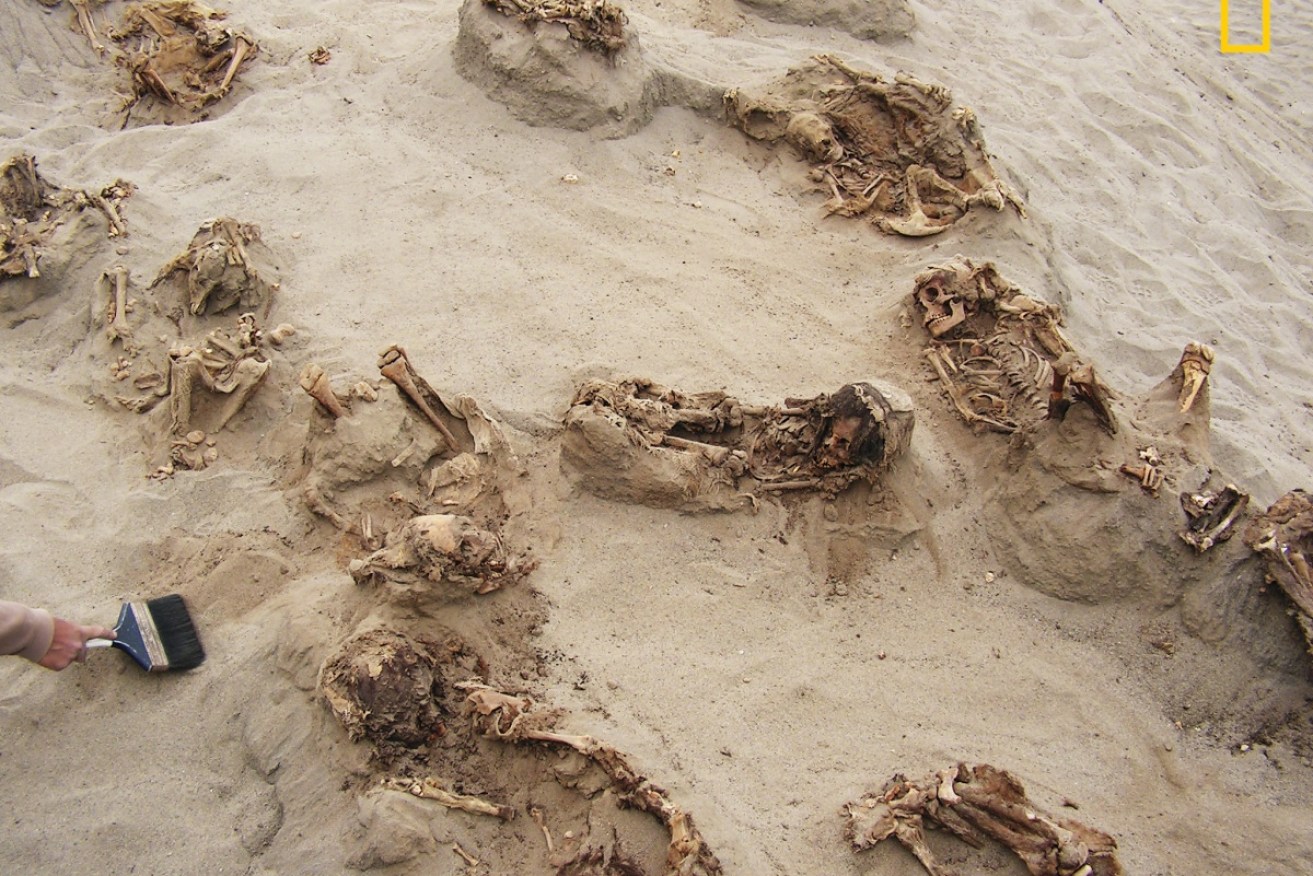Ancient Peru’s child sacrifice discovery may be largest in history


Experts say the children were buried facing the sea and 200 llamas, buried on the same day, faced the mountains to the east. Photo: AAP
Archaeologists have discovered evidence that points to what is possibly the largest child sacrifice in world history off the northern coast of Peru.
A scientific team funded by National Geographic Society have uncovered a burial site for more than 140 children, three adults and 200 young llamas who appear to have been ritually sacrificed around 550 years ago.
The burial site has been under excavation since 2011, but a report on the findings was only released by National Geographic this week.
The sacrifice site, once known as Huanchaquito-Las Llamas, was part of the little-known pre-Columbian Chimú Empire and is located near the UNESCO World Heritage site of Chan Chan, the Chimú administrative centre.
The children range in age from 5 to 14, had their faces smeared with red pigment and were buried facing out to sea.
“Skeletal remains of both children and animals show evidence of cuts to the sternum as well as rib dislocations,” most likely to remove their hearts, the report revealed.

The children were reportedly buried facing the sea. Photo: Gabriel Prieto
“It is ritual killing, and it’s very systematic,” one of the researchers, John Verano of Tulane University, told National Geographic.
As for the three adults found nearby, “signs of blunt-force trauma to the head and a lack of grave goods with the adult bodies lead researchers to suspect that they may have played a role in the sacrifice event and were dispatched shortly thereafter,” the report read.
Researchers also found footprints at the site suggesting the children were marched to their deaths.
The scientists involved in the excavation believe the mass murder was motivated by a desperation to halt a significant climate event related to El-Nino, with mud found during the excavation pointing to severe rain and flooding in the typically arid area.
“People sacrifice that which is of most and greatest value to them,” Gabriel Prieto of the Universidad Nacional de Trujillo said.
“They may have seen that [adult sacrifice] was ineffective. The rains kept coming. Maybe there was a need for a new type of sacrificial victim.”
Until this discovery, the largest occurrence of child sacrifice was the ritual murder of 42 children at Templo Mayor in the Aztec capital of Tenochtitlán at what is now the centre of Mexico City.
And there may be more discoveries to come, with an ongoing National Geographic Society investigation finding archaeological evidence for similar events in the area.
“Las Llamas is already such a unique site in the world, and it makes you wonder how many other sites like this there may be out there in the area for future research,” Mr Prieto said.
“This just may be the tip of the iceberg.”








